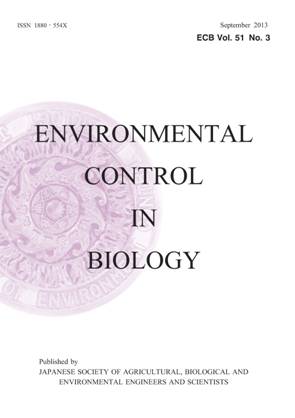55 巻, 2 号
Environmental Control in Biology
選択された号の論文の7件中1~7を表示しています
- |<
- <
- 1
- >
- >|
Original Paper
-
2017 年 55 巻 2 号 p. 59-64
発行日: 2017年
公開日: 2017/04/24
PDF形式でダウンロード (1274K) -
2017 年 55 巻 2 号 p. 65-69
発行日: 2017年
公開日: 2017/04/24
PDF形式でダウンロード (157K) -
2017 年 55 巻 2 号 p. 71-76
発行日: 2017年
公開日: 2017/04/24
PDF形式でダウンロード (243K) -
2017 年 55 巻 2 号 p. 77-83
発行日: 2017年
公開日: 2017/04/24
PDF形式でダウンロード (619K) -
2017 年 55 巻 2 号 p. 85-91
発行日: 2017年
公開日: 2017/04/24
PDF形式でダウンロード (261K) -
2017 年 55 巻 2 号 p. 93-103
発行日: 2017年
公開日: 2017/04/24
PDF形式でダウンロード (880K) -
2017 年 55 巻 2 号 p. 105-112
発行日: 2017年
公開日: 2017/04/24
PDF形式でダウンロード (444K)
- |<
- <
- 1
- >
- >|
